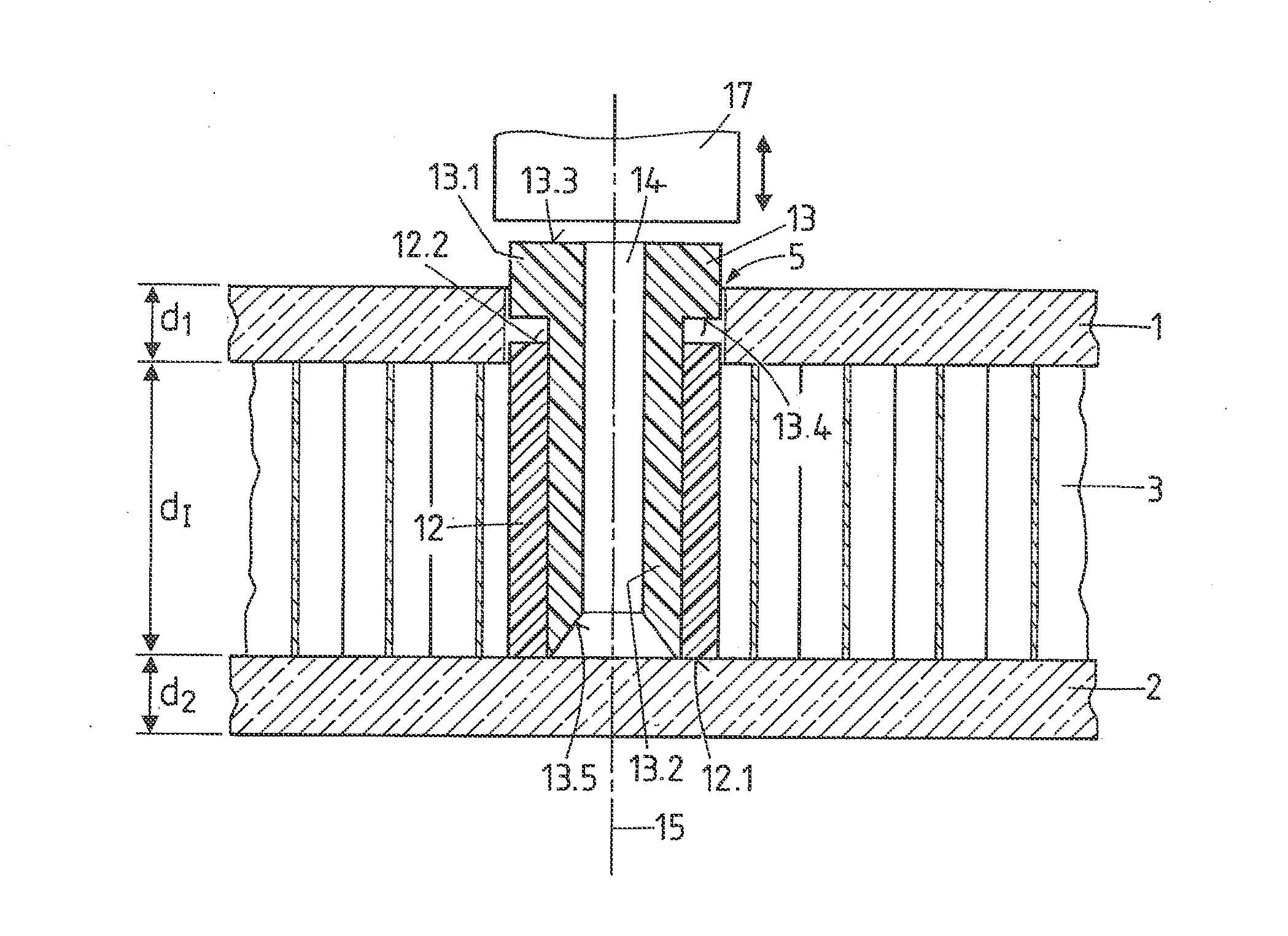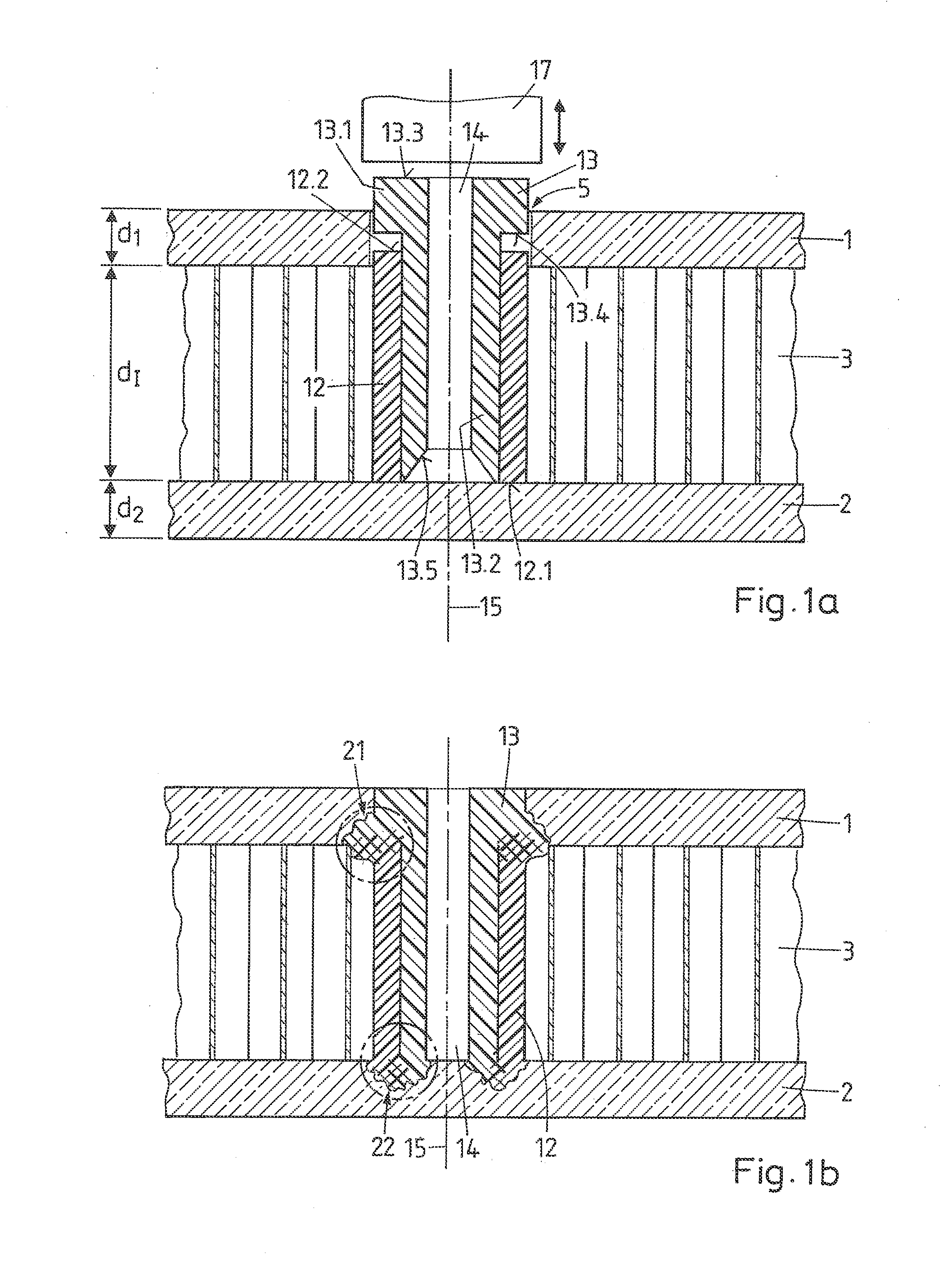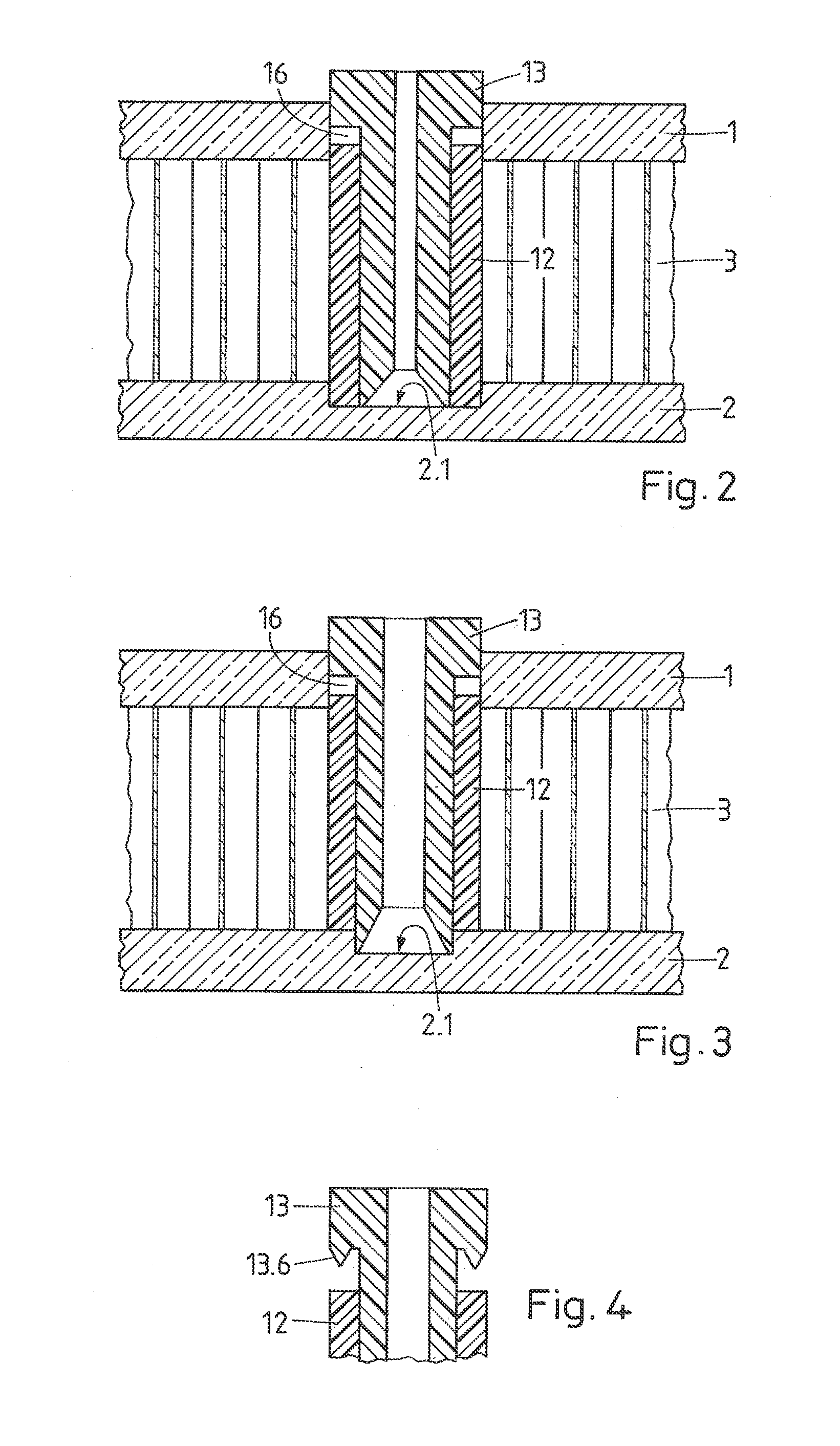Method of anchoring a connector, and connector
a technology of connectors and connectors, applied in the direction of sheet joining, furniture joining, lamination, etc., can solve the problems of insufficient mechanical stability between the building layers provided by the interlining, and difficulty in attaching objects to lightweight building elements
- Summary
- Abstract
- Description
- Claims
- Application Information
AI Technical Summary
Benefits of technology
Problems solved by technology
Method used
Image
Examples
Embodiment Construction
[0052]The lightweight building board of FIG. 1a comprises a first building layer 1, a second building layer 2, and an interlining 3 between the first and second building layer. The first and second building layers may be of identical or of different material compositions. They may for example be of a wood based material, such as a wood composite material like a fiberboard (particle board, medium-density fiberboard, or hardboard) or the like. The building layer thicknesses d1, d2 of the two building layers may be equal or different and may for example be between 1 mm and 15 mm, especially between 2 mm and 10 mm. The distance d1 of the building layers may be chosen within a large range, depending on the needs. Often it is between 20 mm and 50 mm, however, other distances are not excluded, since the distance d1 for most embodiments of the invention is not a critical number.
[0053]The interlining 3 may for example a honeycomb-like structure of cardboard, or alternatively a light insulati...
PUM
| Property | Measurement | Unit |
|---|---|---|
| Thickness | aaaaa | aaaaa |
| Mechanical properties | aaaaa | aaaaa |
| Metallic bond | aaaaa | aaaaa |
Abstract
Description
Claims
Application Information
 Login to View More
Login to View More - R&D
- Intellectual Property
- Life Sciences
- Materials
- Tech Scout
- Unparalleled Data Quality
- Higher Quality Content
- 60% Fewer Hallucinations
Browse by: Latest US Patents, China's latest patents, Technical Efficacy Thesaurus, Application Domain, Technology Topic, Popular Technical Reports.
© 2025 PatSnap. All rights reserved.Legal|Privacy policy|Modern Slavery Act Transparency Statement|Sitemap|About US| Contact US: help@patsnap.com



